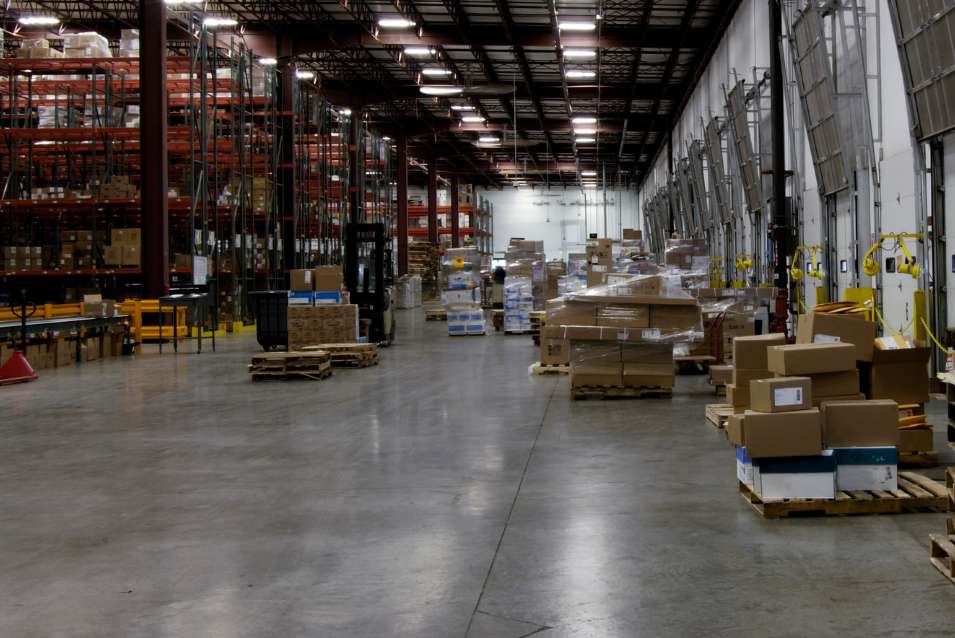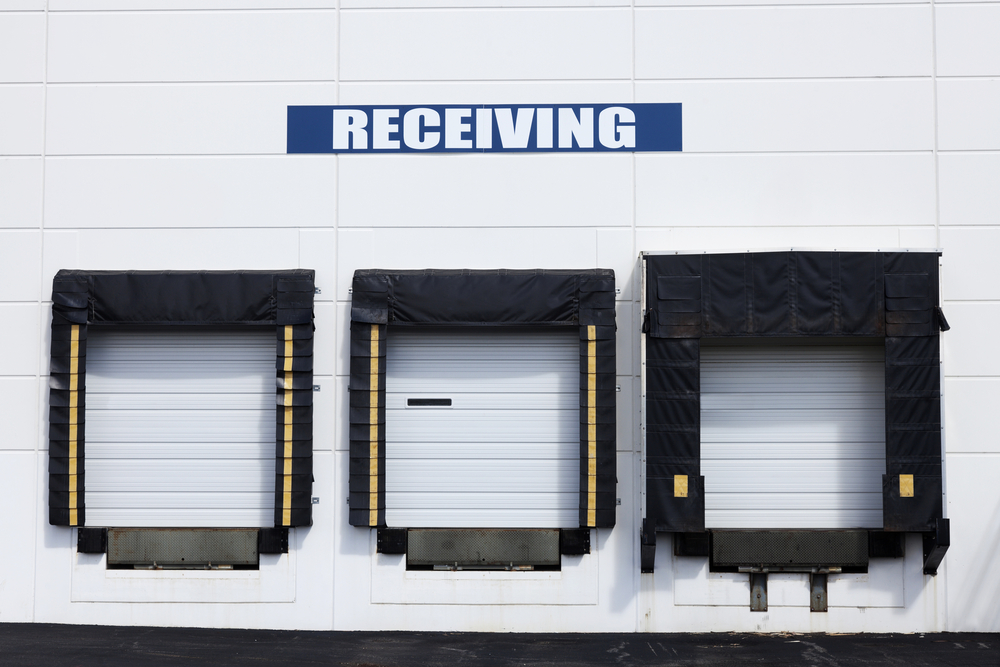At the forefront of the numerous operations within a warehouse is the often-overlooked but crucial warehouse receiving process. This is where the journey of a product within the warehouse begins. As the initial point of contact for incoming shipments, the receiving process is not just about handling packages; it’s the gateway to inventory accuracy and supply chain efficiency.

What is Warehouse Receiving?
Warehouse receiving sets the foundation for efficient inventory management, ensuring that accurate and timely information about incoming goods is available for subsequent warehouse operations. Furthermore, it acts as a critical link between suppliers and the warehouse, contributing to the overall success of the supply chain.
The process encompasses a series of tasks and procedures designed to efficiently and accurately handle incoming shipments. At its core, warehouse receiving involves the inspection, documentation, and verification of goods delivered by suppliers or manufacturers.
1. Inspection
Upon the arrival of a warehouse delivery shipment, a warehouse receiver carefully inspects each package to ensure that the delivered items match the accompanying documentation. This step involves checking for any visible damage and assessing the overall condition of the goods.
The inspection process involves a detailed assessment of the overall condition of the goods. Warehouse personnel scrutinize each package for visible damage, checking for signs of mishandling during transit. This includes examining external packaging for dents, tears, or water damage. Identifying any visible damage at this stage is critical for maintaining accurate inventory records and for preventing potential quality issues downstream in the supply chain.
2. Documentation
Accurate record-keeping stands as an indispensable pillar within the warehouse receiving process, playing a pivotal role in maintaining order and transparency. Warehouse staff engage in meticulous documentation, capturing a wealth of information that forms the backbone of efficient warehouse operations.
In this phase, staff diligently record essential details, including the precise quantities of each item received, detailed item descriptions, and crucial supplier information. The accuracy of these records is important, as it ensures that the warehouse’s inventory aligns seamlessly with the expectations outlined in packing slips, purchase orders, and advanced shipping notices.
The recorded information serves as a dynamic reference point for ongoing inventory management. It empowers the warehouse team to track stock levels accurately, aiding in the replenishment of goods when needed and facilitating timely order fulfillment. This real-time visibility into inventory status is foundational for avoiding stockouts or overstock situations, contributing to an agile and responsive supply chain.
Beyond day-to-day operations, the documentation compiled during warehouse receiving serves as a critical asset during audits. Whether for internal assessments or external regulatory compliance, the detailed records provide a comprehensive trail of each received shipment. This transparency not only instills confidence in the accuracy of the warehouse’s inventory but also streamlines auditing processes, saving valuable time and resources.
3. Verification
The third critical step in the warehouse receiving process is verification, a meticulous cross-referencing exercise conducted by the warehouse receiver or the receiving team. This step is the linchpin for ensuring that the right products, in the correct quantities, seamlessly transition into the warehouse inventory.
The receiving team systematically cross-references the received items with the information detailed in purchase orders, packing slips, and other relevant documentation. This meticulous comparison is an essential safeguard against discrepancies. It acts as a final checkpoint to confirm that the items align precisely with what was expected, minimizing the risk of errors and inaccuracies in the warehouse inventory.
The primary goal of the verification process is to ensure the accuracy of the received goods. By confirming that the right products have been delivered in the correct quantities, the warehouse minimizes the risk of errors that could cascade through subsequent supply chain operations. This attention to detail is fundamental for maintaining precise inventory levels, meeting customer demands, and fostering overall operational efficiency.
4. Sorting and Storage
With the completion of the verification process, the next step in warehouse receiving is sorting and storage. In this phase, the items are arranged based on predetermined criteria to optimize space and streamline retrieval within the warehouse.
After confirming the accuracy of the received items, warehouse personnel initiate the sorting process. This involves categorizing goods according to predetermined criteria, which may include Stock Keeping Unit (SKU) identifiers, product types, or specific storage requirements. This strategic sorting is the bedrock for creating a structured and easily navigable warehouse layout.
The sorting process is a critical step in optimizing space utilization within the warehouse. By grouping items based on their characteristics, warehouses can allocate storage locations efficiently. This maximizes available space and minimizes the risk of overcrowded or underutilized areas, contributing to a more streamlined and space-conscious storage system.
The sorted arrangement sets the stage for easy retrieval when needed. Whether fulfilling customer orders, restocking inventory, or conducting audits, the logical organization of goods expedites the retrieval process. This efficiency is crucial in meeting customer demands promptly, reducing operational delays, and enhancing overall warehouse productivity.
In addition to the initial sorting, warehouses often employ dynamic storage strategies that adapt to fluctuating inventory levels and demand patterns. This flexibility ensures that the warehouse remains agile and responsive to the evolving needs of the supply chain.
5. Communication
Within the warehouse receiving process, effective communication ensures transparency and swift resolution of any issues that surface during inspection or verification. This phase is not just about internal coordination of the receiver warehouse but extends to transparent exchanges with external stakeholders, such as suppliers and procurement teams.
In warehouse operations, discrepancies or issues can arise during the inspection or verification phases. The receiving team plays a proactive role in promptly identifying these issues. However, the crux lies in the subsequent communication, where any discrepancies are immediately conveyed to the relevant parties. This swift and clear communication is vital for expediting issue resolution, preventing further operational hiccups, and maintaining the integrity of the supply chain.
Effective communication is a bridge that connects internal teams within the warehouse and extends outward to involve external partners. Internally, it ensures that different teams are on the same page regarding identified discrepancies, allowing for a coordinated approach to resolution. Externally, transparent communication with suppliers or procurement teams facilitates collaborative problem-solving, fostering a sense of shared responsibility for the accuracy and quality of incoming goods.

The Importance of Record-Keeping
Record-keeping ensures accuracy in inventory management. Every piece of information, from quantities received to supplier details, is captured, providing a real-time snapshot of the warehouse’s stock. This accuracy is essential for timely replenishment, preventing stockouts, and optimizing overall inventory levels.
The records created during warehouse receiving prove invaluable during audits, whether for internal assessments or external compliance. This well-documented trail simplifies the auditing process, fostering confidence in inventory accuracy and ensuring adherence to industry regulations.
Beyond daily operations, these comprehensive records serve as a bedrock for strategic decision-making. Historical data on receiving trends, supplier performance, and inventory turnover rates provide insights guiding future operational enhancements. This data-driven approach enhances adaptability, enabling the warehouse to evolve in sync with shifting demands and industry dynamics.

Tips for Streamlining the Receiving Process
Efficiency in the warehouse receiving process is a cornerstone of successful supply chain management. Some of the ways that can help streamline the receiving process in your warehouse include:
1. Utilizing Technology
Embrace advanced technologies such as barcode scanners, RFID systems, and Warehouse Management Systems (WMS) to automate data capture, reduce manual errors, and enhance real-time tracking.
2. Implementing Standard Operating Procedures (SOPs)
Develop and enforce clear SOPs for the receiving process. Standardized procedures ensure consistency, reduce confusion, and accelerate the training of new personnel.
3. Prioritizing Training
Invest in comprehensive training programs for warehouse personnel involved in receiving. Well-trained staff not only improve accuracy but also contribute to a smoother, more efficient process.
4. Optimizing the Receiving Area Layout
Thoughtfully design the layout of the receiving area to minimize congestion and facilitate the seamless movement of goods. Efficient organization improves workflow and expedites the entire receiving process.
5. Improving Communication Channels
Foster open and efficient communication channels between receiving teams and other warehouse departments. Timely and clear communication is essential for addressing issues promptly and maintaining a synchronized operation.
6. Implementing Cross-Docking Strategies
Explore opportunities for cross-docking, where received goods are immediately transferred to outbound shipping, bypassing storage. This strategy minimizes storage time, reduces handling, and accelerates order fulfillment.
7. Regularly Reviewing and Updating the Receiving Process
Conduct regular reviews of receiving processes, seeking feedback from staff, and identifying areas for improvement. Continuous refinement ensures that the process remains efficient and adapts to changing operational needs.
8. Collaborating with Suppliers
Establish collaborative relationships with suppliers. Clear communication and coordination with suppliers can help streamline the overall supply chain, from order placement to goods receipt.

Conclusion
Warehouse receiving is a meticulous process that ensures the right products enter the warehouse seamlessly. It acts as the vital link between suppliers and the warehouse, contributing to the overall success of the supply chain. Each step, from the careful inspection of incoming shipments to the dynamic organization of goods for efficient storage, plays a crucial role in maintaining operational precision.
With a commitment to customer satisfaction, Elite Anywhere’s dedicated teams, supported by experienced crews, align perfectly with the core principles of efficient warehouse receiving. By combining industry expertise with a focus on customer needs, our company makes the warehouse receiving process a strategic advantage for your business.
About Us

More than just a white glove delivery company: we specialize in receiving, warehousing, shipping, and national white glove delivery & installation services.
Categories
Related posts
Ready to get started?

Experience new growth opportunities and elevate your business to the next level with our unparalleled white-glove delivery service and extensive coverage. By partnering with us, you can tap into previously undiscovered potential that will drive you closer to your goals.

Latest blog posts
From Coast to Coast: Long Distance Moving and Storage Excellence
From Coast to Coast: Long Distance Moving and Storage Excellence Long distance moving is more than just a change of address; it’s a complex journey that demands preparation.
Moving to Cleveland? Make it Stress-Free With These Tips
Elite Anywhere will walk you through every step of your move, from finding the perfect neighborhood to hiring the best Cleveland moving services
Expert Care for Your Valuables: Single Item Moving Services
Single item moving is exactly what it sounds like—a moving service dedicated to transporting one specific item. Learn more in the article!

A complete end-to-end logistics company. From receiving to last-mile delivery and everything in between, our staff delivers a true white glove experience with meticulous care and attention to detail. Need something pickup up, crated, and delivered - anywhere in the world? Let's get started!







